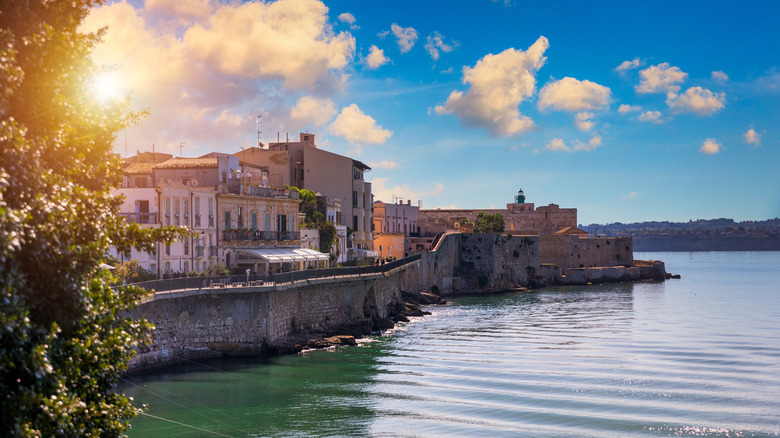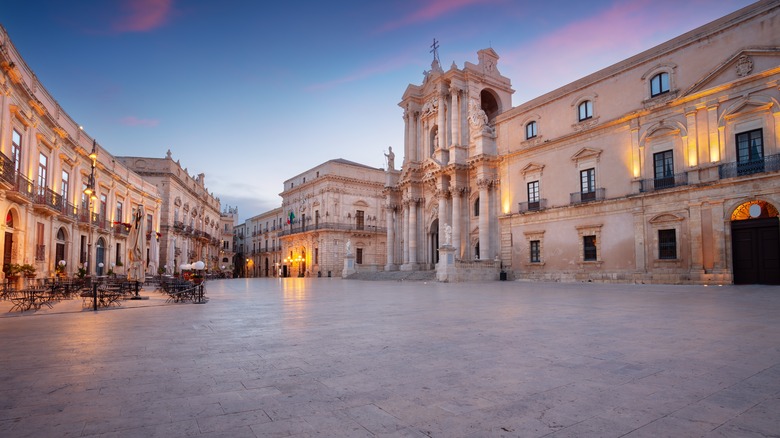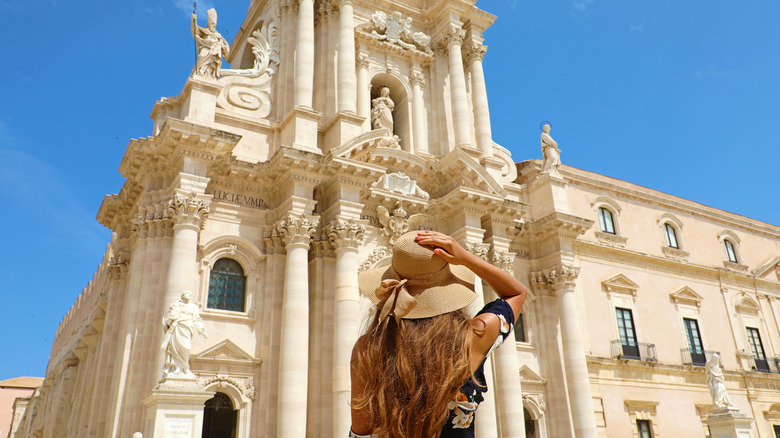This Beautiful Town Is A Must-Visit For History-Buffs Traveling To Italy
Macchiato in hand, pick your way down the cobblestone streets of Syracuse while the blissful aroma of freshly made pesto kindles a reality: you're in Italy. It's true what they say — the further south you venture, Italy's fashionable, northern regions give way to casual provinces, sun-drenched shorelines, and the freshest frutti di mare (seafood) you can find.
While Florence may be the birthplace of the Renaissance, Syracuse is an obscure gem with an equally impressive trove of historical remnants. As Pindar, the ancient Greek lyric poet from Thebes, eloquently stated, "Syracuse is the grandest of cities, a sojourn dear to the indomitable Ares." According to The Los Angeles Times, several influential figures have called Syracuse home, including Archimedes, the Greek mathematician. The city's reconciled walls and medieval architecture are a testament to the stories of the past that live on in the modern era. From the picturesque island of Ortigia to the archaeological sites of Greco-Roman artifacts, explore what gives Syracuse its enchanting and rich cultural foundation.
The historical roots of Syracuse
Founded by the Corinthians in 734 B.C., the Sicilian island is a product of Greek and Roman heritage, infused in the city's DNA. 2,500 years later, countless captivated historians have detailed the great sieges spurred by the Romans, Athenians and Byzantines that shaped the city's roots.
In its earliest recorded years, the native Sicels were oppressed as slaves under the city's Greek founders. Despite facing aggression from empires across the continent, Syracuse emerged triumphant against attacks from Acragas and the Carthenigians. Under the autocratic rule of Dionysius I, Syracuse rose to become the most powerful city within the Greek colonies. However, the city ultimately fell under control of the Romans in 213 B.C. and became a provincial capital. A walk around the Arethusa Fountain and Piazza Duomo still reveal evidence of the city's rise and fall to power during the Iron Age.
How to spend an idyllic day in Syracuse
At the heart of Syracuse is Ortigia Island — a labyrinth of outdoor markets, Baroque sculptures and a tangled network of ancient passageways connecting the outer sea wall to Fontana di Diana. Take a morning passeggiata around the bustling Piazza del Duomo to glimpse the Siracusa Cathedral, a towering feat of chiseled architecture. Make your way through the quaint, narrow alleyways past vine-covered villas until reaching Piazza Archimede. Don't hesitate to stop at one of the many pastarias for some authentic Sicilian pasta. The piazza is home to the stylistic Fountain of Diana, a Greco-Roman inspired sculpture based on the mythic love affair between Alfeo and Aretusa.
Head north on the island to behold yet another ancient treasure: the Temple of Apollo. This magnificent Doric monument dates back to the 6th century and pays tribute to the city's ancient history. Documented evidence has revealed the temple even contains an inscription dedicated to Apollo. Just a short distance outside of Ortigia is Neapolis Archaeological Park. The ancient ruins are the site of some of the city's oldest surviving landmarks, including a Roman amphitheater, the Altar of Hieron and the Ear of Dionysus, a limestone cavern system.


